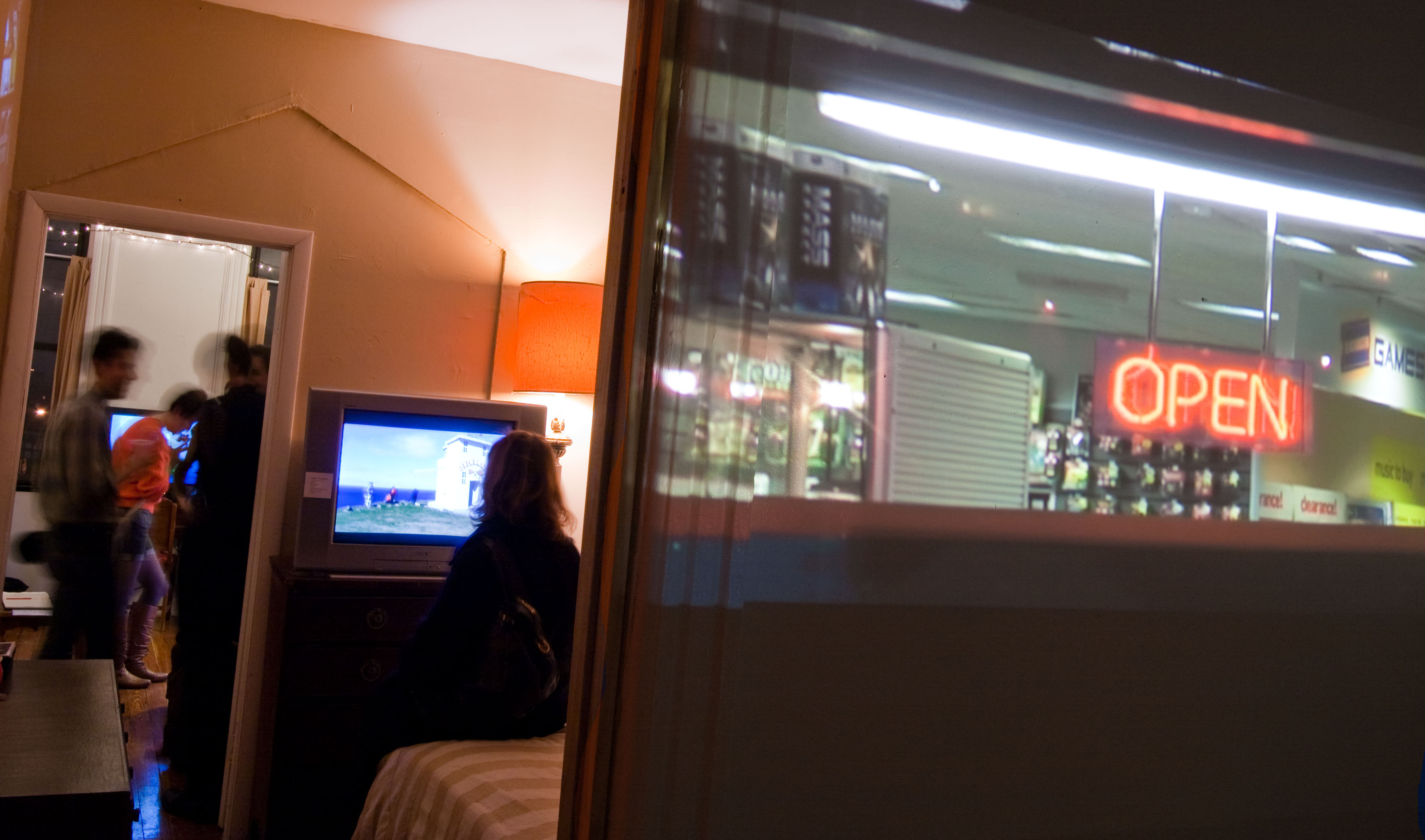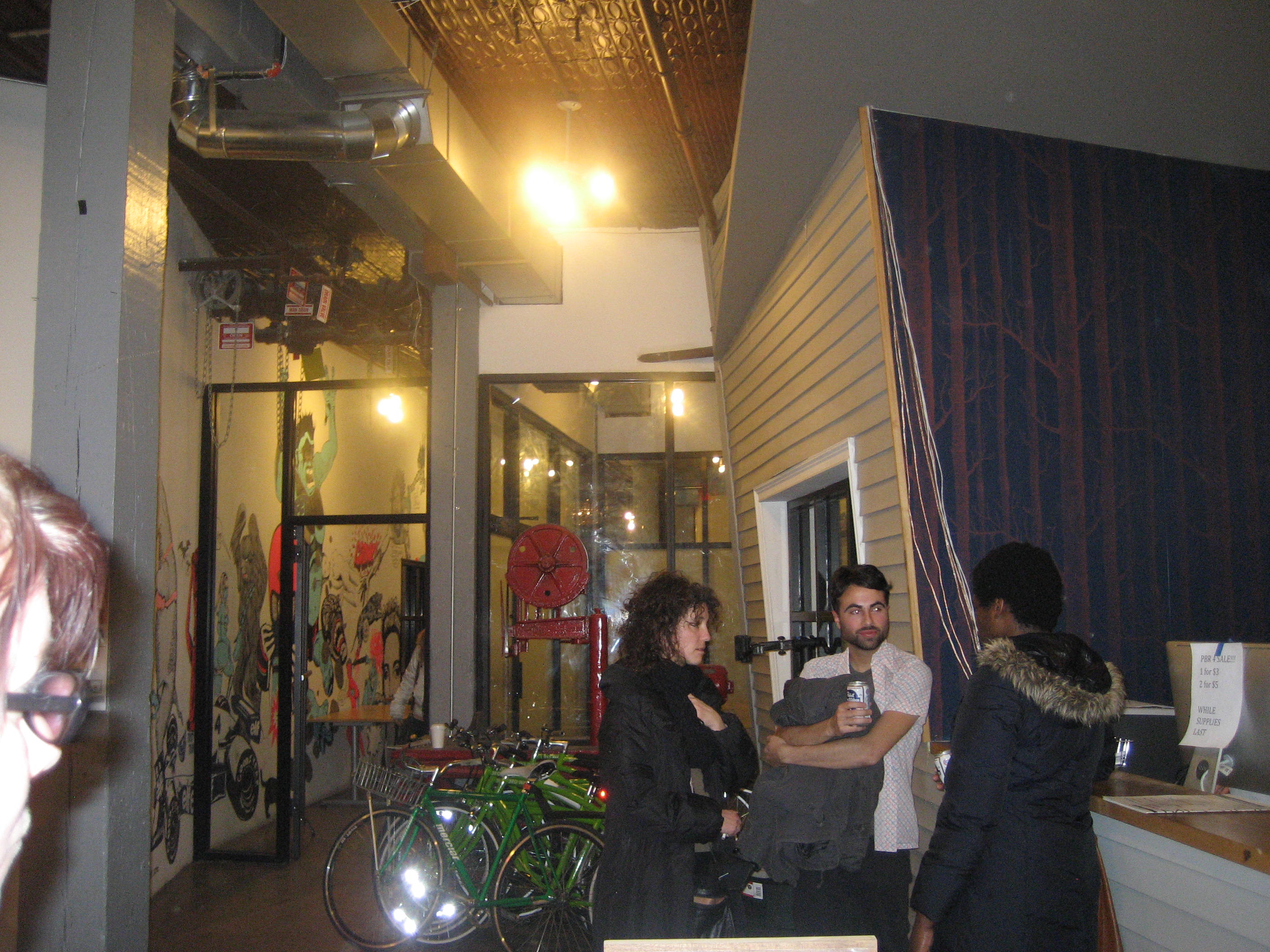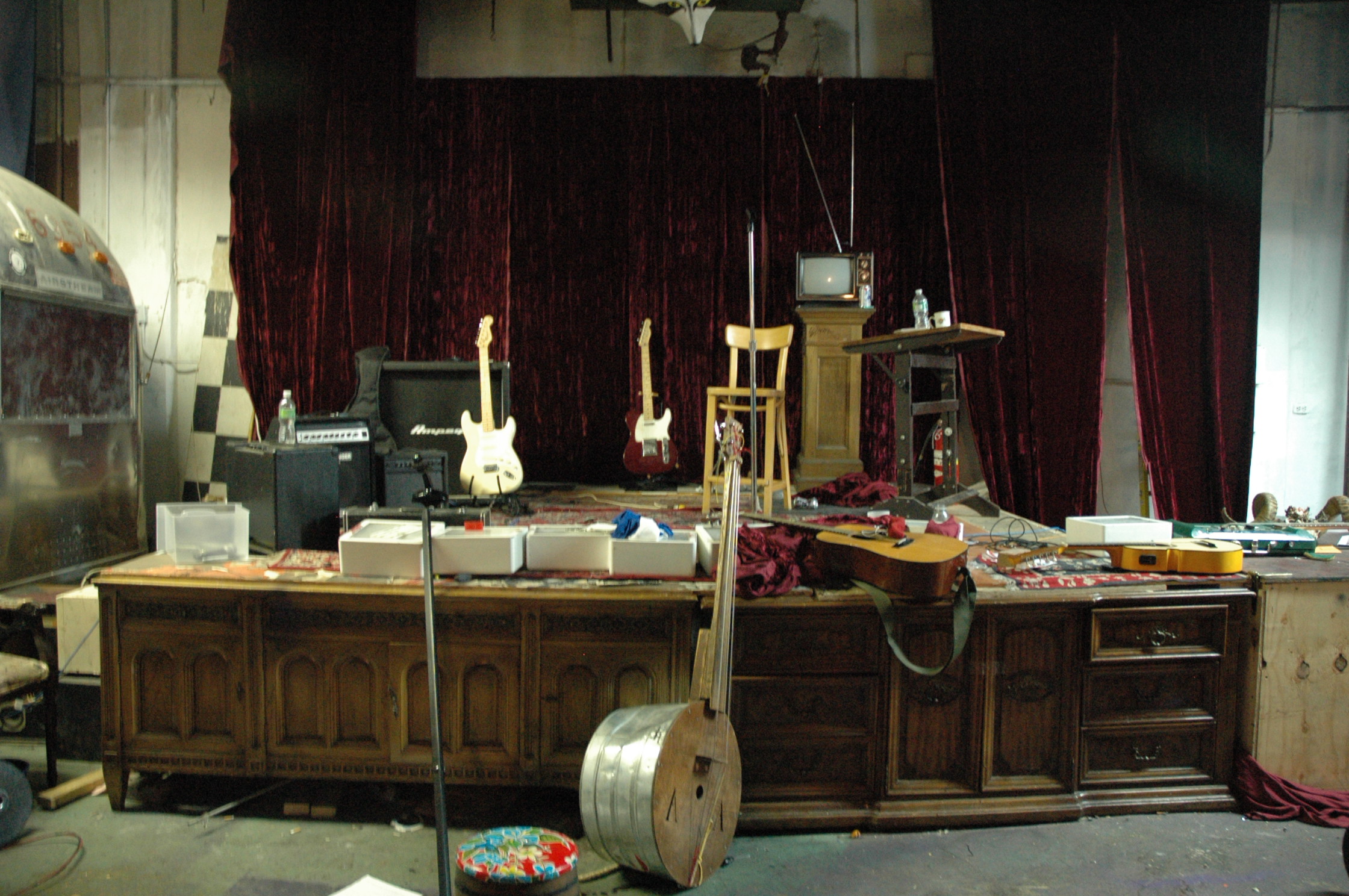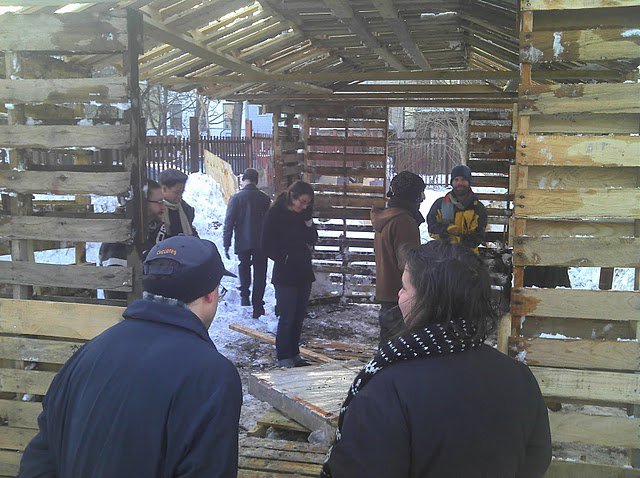concrete utopia
neighborhood: williamsburg | space type: gallery | active: 2010–2011 | links: website, facebook
I love apartment galleries. I’m always struck by the neat intimacy of leaning on someone’s bed or sitting at their kitchen table while looking at art.
Experimental apartment gallery Concrete Utopia ran for a year, showcasing a diverse array of art in different media. The show “Spork Used as Knife” featured video art, photography, and installations. “I’m Not a Good Enough Feminist” was an ambitious undertaking that included twenty-four artists and a companion book of interviews, historical and contemporary texts, artistic pieces, and images.
Q&A with Melanie, Concrete Utopia’s founder, director, and chief curator
brooklyn spaces: How did you pick the name?
Melanie: I was doing a curatorial fellowship in Philadelphia last year, and it came from one of these curatorial statements I was looking at when I was learning about different kinds of spaces around the world. It’s from a man named Ernst Bloch, the director of the MAK Center in Vienna, which is devoted to contemporary making and is a also museum, so it’s both art and design. They’re really devoted to not just showing things that are past, but making possibilities for new things to be made for museums, which is something I’m really interested in, giving people I love a reason to make things. I was seeing so much stagnation of so many people whose work I thought was amazing, and I wanted to encourage them to start making things again. So “concrete utopia” as I reformalize it is a perpetual state of being actualized, or deciding that utopia is where we are right now, it’s not something to be made in the future. It’s about being a certain age when you’re like, “Wait a second, I get to take life by the balls! How do I want to do that?”
brooklyn spaces: How many shows have you had?
Melanie: We had “MANIFEST-O” in October, and then we had a night of performance in November, “Food Party,” featuring a storyteller and the proverbial campfire, which was really sweet. And then we did “An-Architecture,” which was a collaboration with Recession Art, a young organization that does shows at the Invisible Dog. It was a two-person show with Caroline England and Ian Trask.
brooklyn spaces: How long does it take you to put a show together?
Melanie: It depends on the scope of the project. “An-Architecture” took three months. The storytelling show, since it was just a one-night event, was really a month or two. This show I put together in a month, although I should have given it more time. We’ve been working on “I’m Not a Good Enough Feminist” for a really long time now; we were planning on putting it up in January, and then March, and then at our first staff meeting—I am lucky enough to have some amazing, amazing, amazing women who decided to help me out—we realized we still needed more time for it. In the end that one is going to take almost six months to put together.
brooklyn spaces: Do the pieces stay up when the gallery isn’t open?
Melanie: Yeah, each show stays up pretty much until the next one. I’m really lucky because it’s kind of like I’m renting art for free.
brooklyn spaces: Why did you pick this neighborhood?
Melanie: When I moved back to New York, I said, “I’m not going to live in Williamsburg, I’m not going to live in Williamsburg, I’m not going to live in Williamsburg.” And then my best friend moved to Williamsburg, my brother moved to Williamsburg, my two other best friends moved to Williamsburg, and suddenly it was where everyone I knew was living. So it was a personal decision to move here, rather than a gallery decision, but it’s turned out to be a really good place to be.
brooklyn spaces: Do people in the building or in the neighborhood know there’s a gallery here? Is there any interaction?
Melanie: It’s a funny thing, and I think it’s a funny thing that’s inherent to any neighborhood that’s in the midst of this kind of gentrification: this building is half twenty-something hipsters and half Hispanic families. We have a nice relationship with the families, we all smile and say hi, but as much as I want to share what I’m doing, I’m nervous about pushing it into their lives. It’s a gallery, but it’s also often a party, you know? So that’s a difficult relationship that I’m learning how to navigate. We did finally start flyering in the neighborhood for this show, and the neighbors next door came to the walk-through we had last week. So that’s promising.
***
Like this? Read about more art galleries: Invisible Dog, Ugly Art Room, Central Booking, 950 Hart, Wondering Around Wandering, See.Me
































